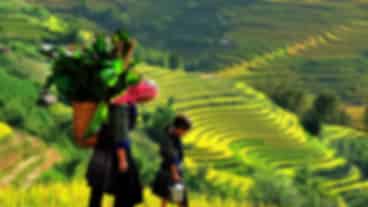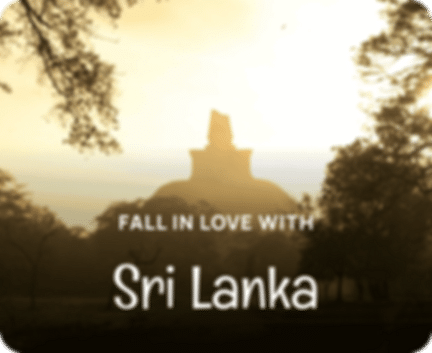The Festivals of the Philippines
Author
Jaihari
Updated Date
April 23, 2025
Read
6 minutes

The Philippines is the land of majestic wonder. It is no surprise that people all over the world travel to this amazing place and want to get a glimpse of the culture and the festivals of the Philippines that are present all year round. They are locally known as fiestas and have a rich and cultural history behind them. Each festival signifies an event or a historic moment and is celebrated with joy and fun. Let’s have a look at some that are celebrated here year on year.
All the towns in the Philippines, regardless of their size, host a fiesta. Usually, the fiesta is considered as a time of joyful celebration for the Filipinos, who indulge in cooking loads and loads of tasty food, welcome with open arms to visitors, and dance in the streets with parades. A few of the Filipino fiestas have become into elaborate, multi-day festivals, while there are others which have been kept to their community roots. Given below are a few of the fiestas and the famous festivals of the Philippines.
Top festivals of the Philippines
Panagbenga

Panagbenga festival
Panagbenga means ‘season of blooming’. This annual flower festival is held in February in the mountain-top city of Baguio, on the island of Luzon. Tourists rush into Baguio to watch and marvel the Sunday parade that works its way along the Session Road. Dancers wear flower-themed costumes, and huge floats decorated with hundreds of blooms are pushed through the streets. The festival symbolizes the city’s recovery from a devastating earthquake that took place in 1990 and is significant for Baguio.
Masskara
Bacolod’s Masskara is the equivalent in the Philippines to a full-blown carnival. Held around October 19 every year, this festival is a major event on the island of Negros. After several years of hard times in the local sugar cane industry, The Masskara was born in the 1980s. The bright and colourful masks worn during the festival reflect the Filipino attitude of good cheer and happiness in the face of adversity. People gather from all around the Visayas region to celebrate in Bacolod. A parade of dancers, wearing bright costumes and festive masks, troops through the city centre, and in the town plaza, pig catching and pole climbing competitions are open to everyone.
Sinulog
You haven’t really seen a Filipino fiesta until you’ve seen Sinulog. Held on the third Sunday of January in Cebu City, Sinulog celebrates the Christ Child, the ‘Santo Niño’ with three days of street parades, a procession of boats on the Mactan Strait, and early morning masses in the historic Basilica del Santo Niño. From a simple street dance (the word ‘sinulog’ describes the movement of water) Cebu now takes its annual fiesta to new heights. Visitors from all over come to celebrate with the Cebuanos in all-night raves and to watch the parades and floats as they pass through the city.
Dinagyang

Dinagyang festival
One of the Philippines’ best fiestas, Iloilo City’s Dinagyang manages to put on a world-class show while still holding tight to its cultural heritage. Dinagyang takes place on the fourth Sunday of January. Roads in the centre of town are closed off to traffic to allow everyone to watch the Ati-Ati Street Dancing and Kasadyahan Parade. The mood is extremely festive, as dance troupes from Iloilo’s schools and colleges go all out to win the first prize. At night, Iloilo transforms into a big street party. Locals eat barbecue, drink and socialize, while live bands entertain the crowds. Firework shows and beauty contests are regular features of modern-day Dinagyang. It is a unique experience in the Philippines that should not be missed.
Ati-atihan

Ati-atihan festival
The tiny town of Kalibo in Aklan takes its fiesta very seriously. Ati-atihan is said to have come about when the indigenous Aeta tribe gave refuge and sold parts of their land to 10 Bornean Datus. Later on the Datus returned the favour by providing shelter and food to the Aetas during a year of famine. For both events, the Aetas held a celebration. The fiesta that is conducted in Kalibo still has one of the most deeply religious and tribal roots to it. Dancers cover themselves with soot to mimic the dark skin of the Aetas, and play drums in the streets. In homes all over the city, locals enjoy a few days of holiday feasting and socializing with friends. Ati-atihan takes place every year in January.
Pahiyas

Pahiyas festival
The province of Quezon on Luzon Island is responsible for hosting one of the more popular fiestas in the Philippines. On May 15, Lucban and the towns nearby decorate their homes with fruits and vegetables in honour of San Isidro Labrador, the patron saint of farmers. A walk through the town reveals houses covered in all types of fresh produce. The festival is a way of giving thanks for a bountiful harvest, and the best-decorated house wins a prize. Toward the end of the festival, visitors are allowed to bring a basket and pick the fruits and veggies from the houses for free.
Kadayawan
This might just be one of the best fiestas in the Philippines for culture lovers to go to. The Kadayawan showcases the awesome island of Mindanao. The meaning of the word ‘kadayawan’ comes from ‘madayaw’, which literally translates to ‘valuable’ or ‘beautiful’. The festival, held in the third week of August, brings together all that is beautiful in Davao City, with a week-long food fiesta, trade fairs and exhibits, ethnic dances, and a famous floral float parade. Kadayawan is the best time to see the unique tribal costumes and experience the rich culture of Mindanao.
Now that you know the vibrant and colourful are the festivals of the Philippines, you can go ahead and plan your trip to this lovely country and have a great time ahead. We at Pickyourtrail offer you amazing itineraries and Philippines Tour packages that you can explore and make your trip a hassle-free one. So what are you waiting for? Book away right now!
Top-Selling Philippines Packages
Philippines Luxury Holiday Packages
Checkout Other Articles Related to Philippines
Canyoneering Philippines Adventure | Mountaineering Philippines | Nightlife in Philippines
Recommended articles for you
Discover Packages


Need help in planning?
Talk to our Travel Experts





























